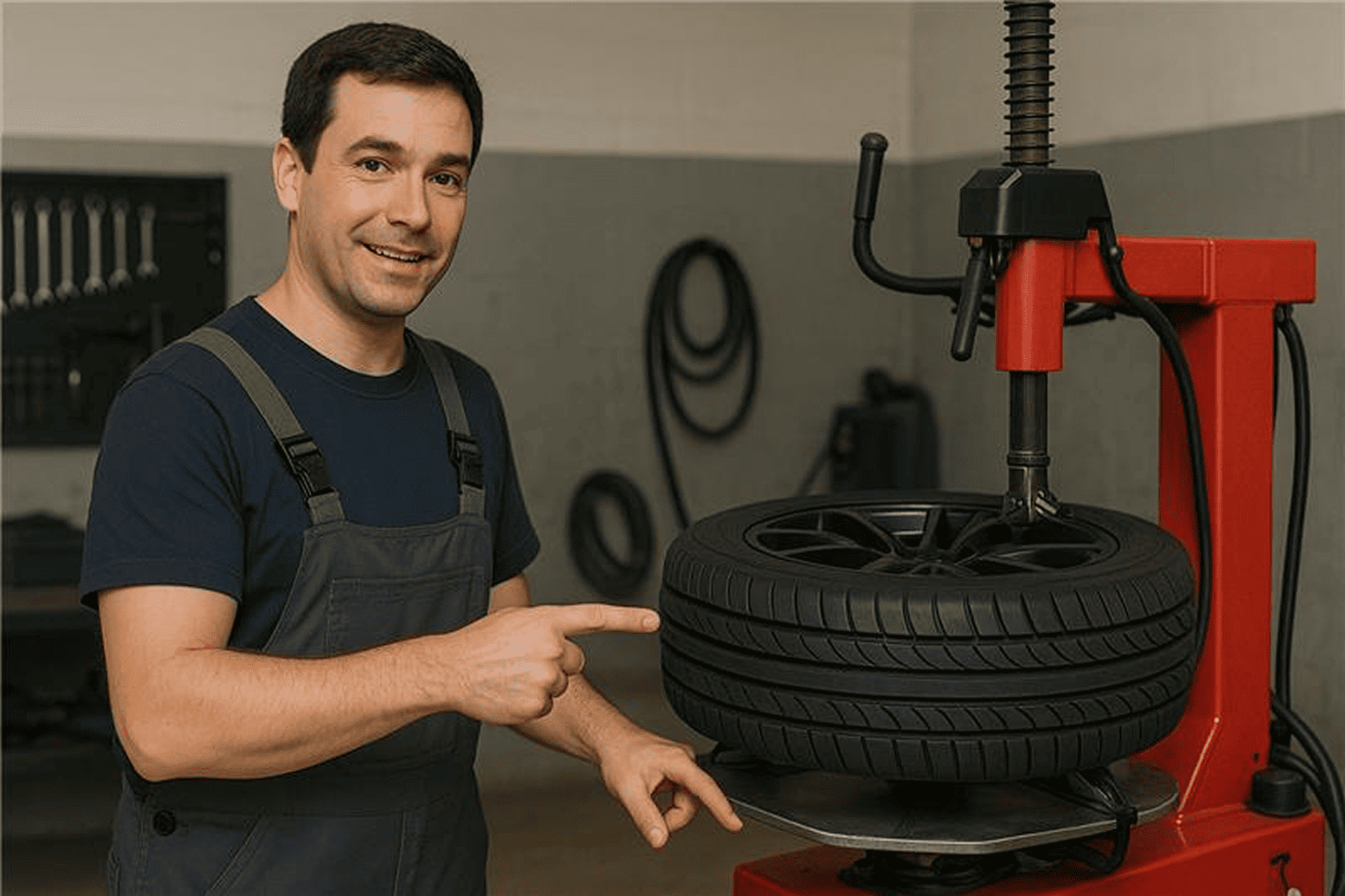We use cookies to make your experience better. To comply with the new e-Privacy directive, we need to ask for your consent to set the cookies. Read our Privacy and Cookie Policy.
- August 21, 2025

Modern tyre changers offer a range of features to handle everything from low‑profile tyres to large tractor wheels. Understanding these options helps you match a machine to your workload and protect customer wheels.
Manual, electric and automatic options
- Manual changers – These are cost‑effective and portable but require significant physical effort, making them suitable for low‑volume or mobile work.
- Electric changers – Powered by motors, they don’t need an air compressor but may require specific electrical infrastructure. They handle specialised tyres with less operator effort.
- Automatic machines – These minimise manual labour and are ideal for run‑flat and low‑profile tyres, automating most of the mounting and demounting process.
Mounting styles and head designs
- Rim‑clamp changers secure the wheel by the rim with adjustable clamps, offering versatility for different wheel sizes.
- Centre‑post changers hold the wheel through the hub for delicate or high‑end wheels, reducing the risk of rim damage.
- Swing‑arm machines provide an adjustable tabletop and allow the mount/demount arm to move away from the turntable.
- Tilt‑back machines tilt the column to create more space for mounting/demounting and often include helper arms for large or stiff tyres.
Advanced technologies
- Leverless/touchless technology uses bead lifters and clamps to remove tyres without pry bars, reducing damage to rims and sidewalls. Many units include integrated wheel lifts and pneumatic assistants to reduce operator strain.
- Heavy‑duty changers employ hydraulic systems and self‑centring chucks to handle tyres up to 95 inches in diameter and are essential for agricultural, construction and off‑road vehicles.
- Helper arms and wheel lifts control bead positioning and reduce lifting injuries. They are especially useful for run‑flat, low‑profile and ultra‑high‑performance tyres.
- Specialised mounting head tools – Nylon mount heads protect chrome and aluminium rims. Euro‑style kits provide better bead positioning for low‑profile tyres.
Key considerations when selecting features
- Capacity and range – Consider the maximum and minimum wheel sizes the machine can handle, especially if you service trucks or motorcycles.
- Automation – Decide how much manual labour you want to eliminate and whether helper arms or wheel lifts are necessary.
- Rim protection – Look for protective clamps, nylon tools and other features that prevent rim damage.
- Adaptability – Machines with extended clamps or modular attachments handle a wide range of wheels, from small passenger vehicles to large commercial tyres.
Want to ensure your wheel assemblies are balanced after fitting new tyres? See our wheel changer guide. To explore more equipment, browse our full range of tyres changers.



